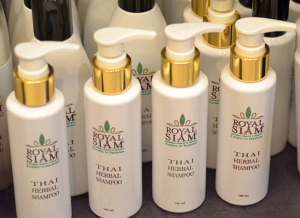
Sodium Lauryl Sulfate
Sodium lauryl sulfate (also called sodium dodecyl sulfate) is an anionic surfactant. One online definition of a surfactant reads: “a substance that tends to reduce the surface tension of a liquid in which it is dissolved”. For the purposes of our discussion, we identify sodium lauryl sulfate as a detergent, rather than a soap. Detergents do not fail to function in hard water as a soap does.
But what does it mean when it says SLS is anionic? An ion is an atom or molecule that is not electrically neutral. In water, sodium lauryl sulfate forms a positive ion (or cation) and a negative ion (or anion). We write,
H3C-(CH2)11-OSO3-Na → H3C-(CH2)11-OSO3– + Na+
Sodium is the cation. The remainder of the molecule is the anion. It is the long chain anionic portion that gives this substance its anionic surfactant identification. This portion of the molecule is called the organosulfate portion.
Sodium Laureth Sulfate
Sodium laureth sulfate, with its similar sounding name, is also known as sodium lauryl ether sulfate (SLES). It, too, is an anionic surfactant. In water, its transformation is written,
H3C-(CH2)11-(OCH2CH2)n-OSO3-Na → H3C-(CH2)11-(O CH2CH2)n-OSO3– + Na+
What is the difference, other than a purely chemical one, between sodium lauryl sulfate and sodium laureth sulfate?
So What’s the Difference?
It requires an additional step to convert SLS to SLES. Additional steps cost additional money. So why do some choose SLES for their shampoo? What is the difference? To quote the reference cited below, “SLS is a skin irritant. This can cause some minor skin irritations like dry, itchy skin. SLES is formulated [to] be much milder and not irritate the skin.” Both SLS and SLES are added, in part, because of their foaming characteristic. Foam is equated with a successful cleaner by the average consumer.
Cocamidopropyl Betaine
Cocamidopropyl betaine is actually a mixture of compounds derived from coconut oil. Chemically, its major component, lauramidopropyl betaine, is written,
H3C-(CH2)10-(CO)(NH)-(CH2)3-(N+(CH3)2)-CH2-COO–
Notice both the positive and negative charges are part of the same molecule, even without the presence of water. Such a molecule is called a zwitterion. As such, it is not classed as purely ionic. Cocamidopropyl betaine is added to shampoos to promote foaming and to reduce irritation.
Note: You might also enjoy What is the Difference Between Soap and Detergent?
References: